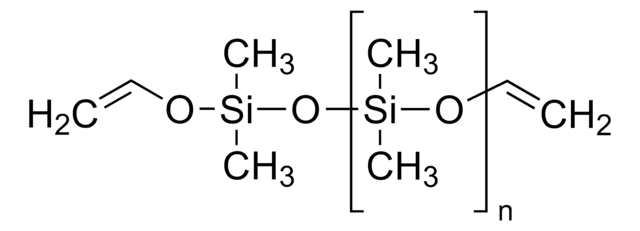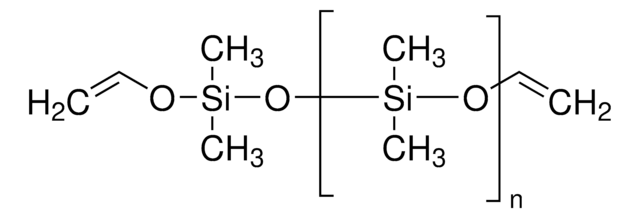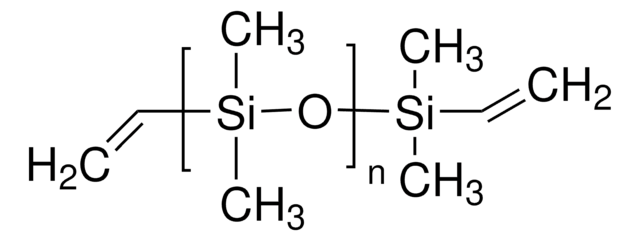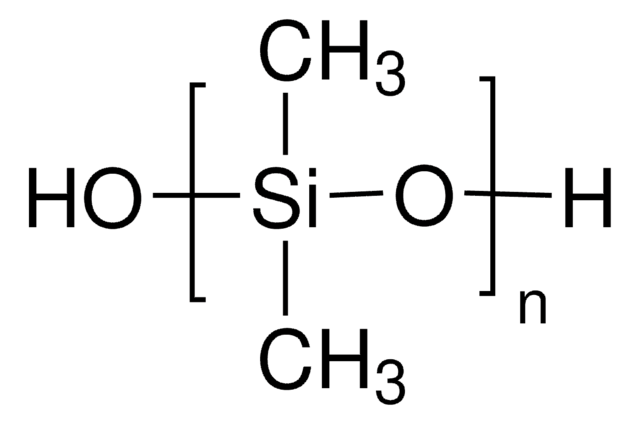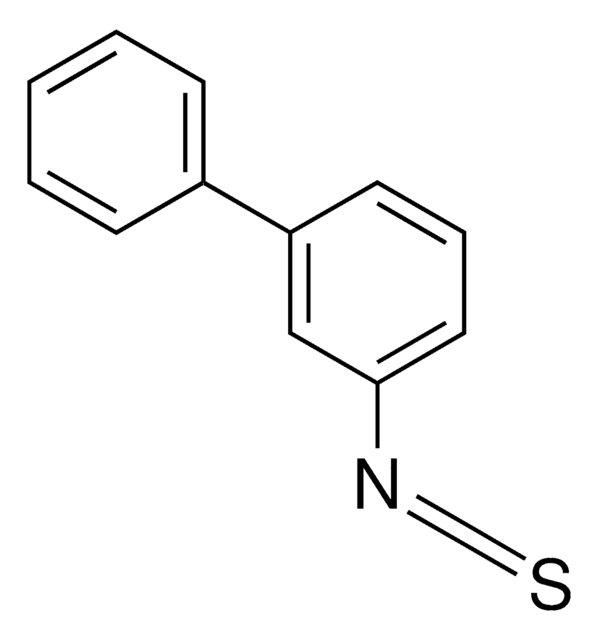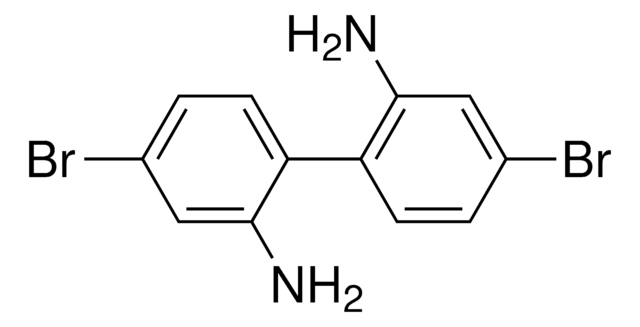推荐产品
形式
liquid
粘度
123800 cP (part A or based)
66700 cP (mixed)
一般描述
2-part, 10:1 mix, translucent encapsulant with high tear strength. Dow Corning® silicone encapsulants are supplied as two-part liquid component kits. When liquid components are thoroughly mixed, the mixture cures to a flexible elastomer, which is well suited for the protection of electrical/electronic applications. Dow Corning silicone encapsulants cure without exotherm at a constant rate regardless of sectional thickness or degree of confinement. Dow Corning silicone elastomers require no post cure and can be placed in service immediately following the completion of the cure schedule. Standard silicone encapsulants require a surface treatment with a primer in addition to good cleaning for adhesion while primerless silicone encapsulants require only good cleaning.
应用
Preweighed monomer and curing agent in convenient blister packs. SYLGARD® 186 Silicone Elastomer Kit is comprised of base/curing agent to be mixed in a 10 (base): 1 (curing agent) ratio by weight for manual mixing.
Potential Uses:
Working time at 25 °C (pot life hours): 1.65 hr.
Heat cure time at 100 °C: 25 minutes.
Heat cure time at 125 °C: 15 minutes.
Heat cure time at 150 °C: 15 minutes.
Potential Uses:
- General potting applications.
- Power supplies.
- Connectors.
- Sensors.
- Industrial controls.
- Transformers.
- Amplifiers.
- High voltage resistor packs.
- Relays.
- Adhesive/encapsulant for solar cells.
- Adhesive handling beam lead integrated circuits during processing.
Working time at 25 °C (pot life hours): 1.65 hr.
Heat cure time at 100 °C: 25 minutes.
Heat cure time at 125 °C: 15 minutes.
Heat cure time at 150 °C: 15 minutes.
Processing/Curing - Thoroughly mixed Dow silicone encapsulant may be poured/dispensed directly into the container in which it is to be cured. Care should be taken to minimize air entrapment. When practical, pouring/dispensing should be done under vacuum, particularly if the component being potted or encapsulated has many small voids. If this technique cannot be used, the unit should be evacuated after the silicone encapsulant has been poured/dispensed. Dow silicone encapsulants may be either room temperature (25°C/77°F) or heat cured. Room temperature cure encapsulants may also be heat accelerated for faster cure. Ideal cure conditions for each product are given in the product selection table. Two-part condensation cure encapsulants should not be heat accelerated above 60°C (140°F).
Pot Life And Cure Rate - Cure reaction begins with the mixing process. Initially, cure is evidenced by a gradual increase in viscosity, followed by gelation and conversion to a solid elastomer. Pot life is defined as the time required for viscosity to double after Parts A and B (base and curing agent) are mixed and is highly temperature and application dependent. Please refer to the data table.
Useful Temperature Ranges - For most uses, silicone elastomers should be operational over a temperature range of -45 to 200°C (-49 to 392°F) for long periods of time. However, at both the low- and high temperature ends of the spectrum, behavior of the materials and performance in particular applications can become more complex and require additional considerations. For low temperature performance, thermal cycling to conditions such as -55°C (-67°F) may be possible, but performance should be verified for your parts or assemblies. Factors that may influence performance are configuration and stress sensitivity of components, cooling rates and hold times, and prior temperature history. At the high-temperature end, the durability of the cured silicone elastomer is time and temperature dependent. As expected, the higher the temperature, the shorter the time the material will remain useable.
Compatibility - Certain materials, chemicals, curing agents and plasticizers can inhibit the cure of addition cure adhesives. Most notable of these include: organotin and other organometallic compounds, silicone rubber containing organotin catalyst, sulfur, polysulfides, polysulfones or other sulfur containing materials, unsaturated hydrocarbon plasticizers, and some solder flux residues. If a substrate or material is questionable with respect to potentially causing inhibition of cure, it is recommended that a small scale compatibility test be run to ascertain suitability in a given application. The presence of liquid or uncured product at the interface between the questionable substrate and the cured gel indicates incompatibility and inhibition of cure.
Pot Life And Cure Rate - Cure reaction begins with the mixing process. Initially, cure is evidenced by a gradual increase in viscosity, followed by gelation and conversion to a solid elastomer. Pot life is defined as the time required for viscosity to double after Parts A and B (base and curing agent) are mixed and is highly temperature and application dependent. Please refer to the data table.
Useful Temperature Ranges - For most uses, silicone elastomers should be operational over a temperature range of -45 to 200°C (-49 to 392°F) for long periods of time. However, at both the low- and high temperature ends of the spectrum, behavior of the materials and performance in particular applications can become more complex and require additional considerations. For low temperature performance, thermal cycling to conditions such as -55°C (-67°F) may be possible, but performance should be verified for your parts or assemblies. Factors that may influence performance are configuration and stress sensitivity of components, cooling rates and hold times, and prior temperature history. At the high-temperature end, the durability of the cured silicone elastomer is time and temperature dependent. As expected, the higher the temperature, the shorter the time the material will remain useable.
Compatibility - Certain materials, chemicals, curing agents and plasticizers can inhibit the cure of addition cure adhesives. Most notable of these include: organotin and other organometallic compounds, silicone rubber containing organotin catalyst, sulfur, polysulfides, polysulfones or other sulfur containing materials, unsaturated hydrocarbon plasticizers, and some solder flux residues. If a substrate or material is questionable with respect to potentially causing inhibition of cure, it is recommended that a small scale compatibility test be run to ascertain suitability in a given application. The presence of liquid or uncured product at the interface between the questionable substrate and the cured gel indicates incompatibility and inhibition of cure.
SYLGARD® 186, a high tensile strength two-part silicone system, can be used in the formation of elastic substrates for potential usage in flexible electronics. It can be used in the fabrication of microcable neuroelectrodes for biomedical micro-electromechanical systems (MEMS).
特点和优势
Features:
Benefits:
- 10:1 mix ratio.
- High viscosity.
- RT and heat cure.
- High tear strength.
- UL tested.
Benefits:
- Rapid, versatile cure processing controlled by temperature.
- Can be considered for uses requiring UL requirements.
制备说明
Mixing And De-Airing - Dow silicone encapsulants are supplied as two-part liquid component kits. When liquid components are thoroughly mixed, the mixture cures to a flexible elastomer, which is well suited for the protection of electrical and PCB system assembly applications. The 10:1 mix ratio gives one latitude to tune the modulus and hardness for specific application needs and production lines. Dow silicone encapsulants cure without exotherm at a constant rate regardless of sectional thickness or degree of confinement. Dow silicone elastomers require no post cure and can be placed in service immediately following the completion of the cure schedule. Standard silicone encapsulants require a surface treatment with a primer in addition to good cleaning for adhesion while primerless silicone encapsulants require only good cleaning.
Preparing Surfaces - In applications requiring adhesion, priming will be required for the silicone encapsulants. See the Primer Selection Guide for the correct primer to use with a given product. For best results, the primer should be applied in a very thin, uniform coating and then wiped off after application. After application, it should be thoroughly air dried prior to application of the silicone elastomer. Additional instructions for primer usage can be found in the information sheets specific to the individual primers.
Preparing Surfaces - In applications requiring adhesion, priming will be required for the silicone encapsulants. See the Primer Selection Guide for the correct primer to use with a given product. For best results, the primer should be applied in a very thin, uniform coating and then wiped off after application. After application, it should be thoroughly air dried prior to application of the silicone elastomer. Additional instructions for primer usage can be found in the information sheets specific to the individual primers.
法律信息
Dow Corning is a registered trademark of The Dow Chemical Company or an affiliated company of Dow
Sylgard is a registered trademark of The Dow Chemical Company or an affiliated company of Dow
警示用语:
Warning
危险声明
危险分类
Eye Irrit. 2 - Skin Irrit. 2 - STOT SE 3
靶器官
Respiratory system
WGK
WGK 3
法规信息
新产品
Highly-compliant, microcable neuroelectrodes fabricated from thin-film gold and PDMS
McClain MA, et al.
Biomedical Microdevices, 13(2), 361-373 (2011)
Design and performance of metal conductors for stretchable electronic circuits
Gonzalez M, et al.
Circuit World (2009)
商品
Self-healing soft electronic materials enable autonomous repair, reducing waste and costs in electronic devices.
我们的科学家团队拥有各种研究领域经验,包括生命科学、材料科学、化学合成、色谱、分析及许多其他领域.
联系技术服务部门